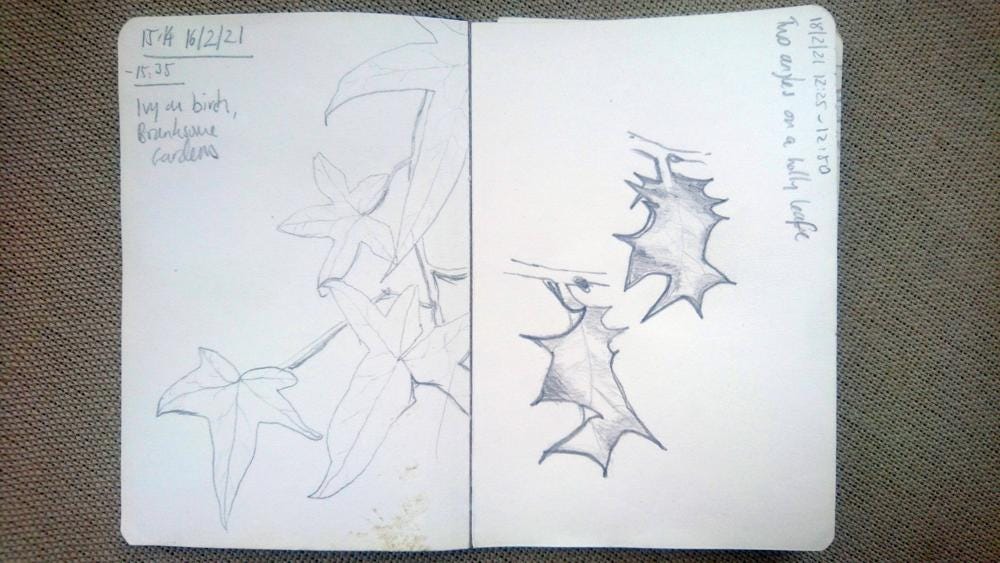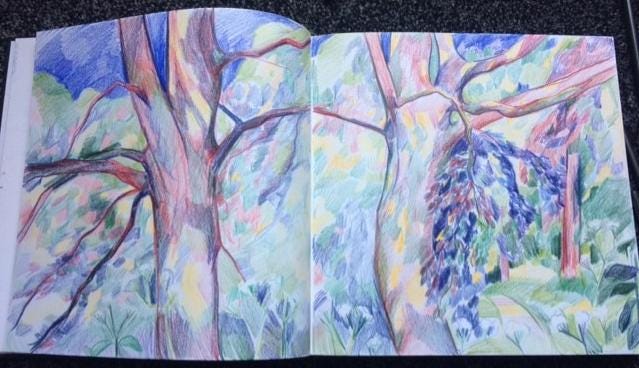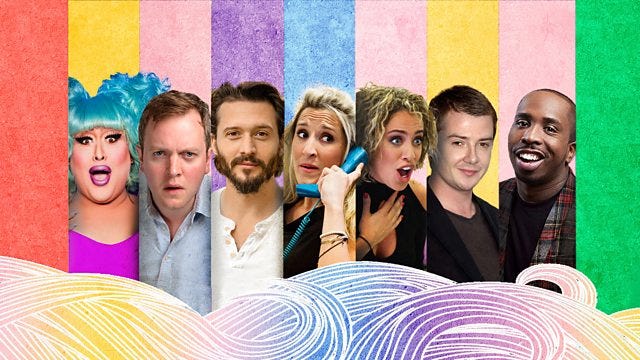Happy Friday
And welcome to edition 257—coincidentally the international dialling code for Burundi, a tiny landlocked nation in the Great Rift Valley, home of the early nineties’ second most famous East African genocide and declared the least happy nation on earth in 2018.
I feel like these headlines are grossly unfair of the Internet—particularly as Burundi has since moved up thirteen places on the official UN chart of happiness. So here are three much more optimistic facts:
Burundians apparently like to drink impeke, a low-alcohol sorghum beer, with straws dipped into a communal jug. It’s supposed to symbolise unity.
Sitting at the head of Lake Tanganyika, the world’s second largest, deepest and oldest freshwater lake, Burundi is also home to the source of the Nile (probably).
‘Burundi beat’ inspired the ‘new tribalism’ of Adam and the Ants. Given that the New York Times reviewed the work as ‘an inadvertent racial slur as grating as the most hysterical white blues’, you are advised to seek out the original.
Now, on with the show!
🎨 You can also read this article on my website
Drawing on the power of nature
How art outdoors can help enhance gains in positive wellbeing
Last week I mentioned the research of Miles Richardson and the Nature Connectedness Research Group at the University of Derby. Specifically, I was intrigued by their recent study, which suggests that it’s ‘moments, not minutes’ that influence how we feel after our encounters with nature. It’s quality, not quantity.
Richardson et al. suggest that ‘simple everyday activities’ that help us notice nature, like birdwatching or smelling flowers, are what drive down our scores of stress, anxiety and depression. So, this week, I decided to take them seriously.
On Tuesday afternoon, I dug out a blank notebook, grabbed an HB pencil and stomped up to Branksome Gardens (one of my recent nearby nature discoveries). I wandered around a bit, scoping out a quiet place where I could do my dirty work in peace.
I sat down on a bench. But it only offered an open vista: churned mud, a chain link fence, a stand of denuded birch around a foetid pond. I needed something I could get lost in. So I stood up again, stomped over the mud and squelched down to the pond.
I rested my notebook on the rotting timber of the fence and scrutinised the bark of a silver birch. After a few seconds, my eyes adjusted around the curves of ivy against the peeling ash of the shadowy scrolls of bark. And I began to draw. Badly.
It’s worth confessing right away: yes, I can see that these are pretty crap. But that’s not the point. For the thirty minutes they each took to draw, I could forget everything that’s happened in the past year and suspend judgement over everything that is yet to come.
Art has been shown, independently of nature, to be strongly associated with, not only positive mental wellbeing, but healthy eating and physical activity. Drawing has also been used to stave off burnout in medical students. So, even if my crap drawing doesn’t enhance my experience of the natural world, hopefully the creativity has its own rewards.
But how did I feel as I tramped back down along the prom, wind in my hair, notebook in my pocket? I’m not sure. It’s hard to separate out the effects of nature, the effects of a half hour break and the effects of the so-called artwork. But I definitely felt lighter—elevated, somehow.
I’ve been out drawing every day this week and I already look forward to the creative hiatus in the merciless pings of the workday. Drawing is a convenient excuse for a freelancer always looking for productive value. I’m not aimlessly gawping up into a tree (although that is always worthwhile), I’m creating something real and I’m learning something new.
And, boy, have I got a lot to learn. I have deliberately started with nothing more complicated than a very small notebook and an HB pencil. With these two tools, I hope to grasp the fundamental skills of drawing before I ever contemplate anything more ambitious.
Inspired by Bob Ross, a friend of mine has really got into painting over lockdown. For him, it’s a relaxing way to spend an hour or two away from laptops and smartphones. I got excited about the idea, watched a couple of wonderful little episodes, but was ultimately put off by all the kit I’d have to buy—easels, acrylics, brushes, canvasses, oils. I wanted art supplies that I could pick up, put in my pocket and take out into the wild.
(Side note: Bob Ross seems to exclusively paint bucolic landscapes of rivers, forests and mountains. Art and nature make a hell of a pair.)
Oil painting might be a step too far, but the crap landscape I drew on Wednesday, looking between a mess of pines out to the wave-washed sea, might have benefitted from a few coloured crayons.
Once I’ve graduated through the shades of pencil, I might look into what I can learn about colour. And I’m lucky that I won’t have to search far for inspiration.
Earlier this week, a talented friend of mine kindly shared her ‘study of tree mentors’. Here is Naomi Pratt’s drawing of a pair of copper beeches that stand in the cemetery at the end of her garden:
Now there’s something to aspire to! I feel like I could stare at this drawing all day—it’s almost as good as resting there among the quiet gravestones. Here’s what Naomi says about her friendly neighbourhood copper beeches:
Their height makes you feel very small in a comforting way and they have a tremendous foliage. I tried to capture this in a drawing last summer, but it is a challenge to draw a tree—there is so much going on!
You can admire more of Naomi’s wonderful drawings of the natural world on her website.
Perhaps one day I’ll be able to create drawings half as beautiful as hers. And, even if I can’t, I mean to persist with my scrawlings because, as Naomi wrote in the email that accompanied these images, drawing ‘is an activity which allows me to look more deeply at the world’.
And that’s exactly what Miles Richardson et al. were hoping for.
~
The Nature Connectedness Research Group at the University of Derby have created a pile of Covid-19 nature resources to help us ‘find a friend in nature’. Still want more? Join me on their free online course. (Thanks to G.C. for those links.)
10 days before Foiled is cut off…
Scarcity is the salt of life and I’m afraid you have only 10 days left to listen to the first episode of Foiled before each episode gradually falls off the end of the space-time continuum and I can finally stop banging on about how great this series is.
Episode 1 with Garnon Davies as Tonypandy’s local baguettes kingpin
Episode 4 with Kiell Smith-Bynoe as Mike the karaoke booth manager
Subscribe to the whole series on BBC Sounds
Any more for any more?
Are you pregnant? If so, you probably need to be mesmerized. (Thanks M.C.!)
Crap sense of direction? This episode of CrowdScience offers hope.
Bored of the BBC? Explore independent radio stations all over the world in the gorgeous Radio Garden. Crooze FM, Antwerp, were playing back to back Christmas songs when I tuned in.
Remember The Great Whatsapp Stink? The furore (not entirely of my own creation) has forced Whatsapp to delay their change in policy until May. We have a couple of months’ grace to find alternatives.
I don’t know if it’s the springing of spring, but I’m starting to get into the rhythm of 2021. In the past few weeks, a job application process has focussed the mind and nudged me to make sure that I’m putting in the hours at work. I don’t know whether I’ll get the job, but the ritual of application has already repaid me twice over.
I’m off to volunteer at the vaccination centre again now—my first shift for a couple of weeks. Apparently Dorset is ahead of the curve and we’re starting to vaccinate the under 70s. Should be fun!
Finally: a huge thank you to all paying subscribers—you genuinely make my day/week/year. Have an exploratory weekend, y’all.
Big love,
dc:
CREDITS
Hello, I’m David Charles and I’m a UK-based writer and outdoor instructor. Say hello by replying to this email, or delve into 500+ other articles on davidcharles.info.
11 percent funded ▲▲△△△△△△△△△△△△△△△△△△
These free weekly emails are supported by readers who scroll all the way to the bottom—readers like you 😁 Help unlock the commons by becoming a paying subscriber for £30 per year—about 58p per newsletter. To say thanks, I’ll send you a book!






